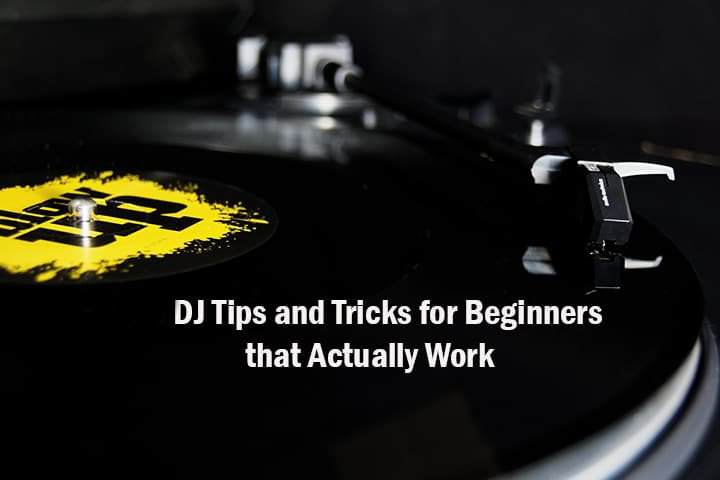Disclosure: This post contains affiliate links, which means we may earn a commission if you purchase through our links at no extra cost to you.
In case you’ve ever been a part of a DJ night, you would have noticed the smoothness with which one trick slips into another.
There is no glitch whatsoever, there are no tempo modifications or gaps. When the audience hears the track end, they might get distracted and the hyped sense around will be lost.
While with the help of mixing, the DJ can continuously play and blend music one after the other, the audience loses the sense of presence and it is easier to get lost into the music.
The mechanics of how DJs achieve these transitions is a tricky one and cannot be skipped if you want your talents as a DJ to be acknowledged.
Table of Contents
What is transitioning?
Transitioning in between two tracks is a tricky process. The DJ prepares the tunes as the present track is about to end.
They apply pitch control; the track’s tempo begins to match with that of the next track. This is the true essence of mixing and transitioning.
When the end of the first record begins the DJ plays the second record. As this happens the audience can hear both the records at the same time.
After some time, the volume of the second record increased so it is clear to the present audience that both the tracks are playing in sync.
Eventually, the second track takes control of the beat and the first track’s volume is taken down slowly.
In the end, it is only the second record that is playing solely. This marks the completion of the mixing process.
What are Some of the most useful DJ transitioning techniques?

1. Timing the transitioning
Most of the DJ standards follow the four-beat intervals. The effect is that most of the audio with this structure has most of the predictable phrases tuning up at the very end of the audio.
Another useful timing tip is to time your transitions at the 8th, 16th or the 32nd beat. Timing completely depends on the tracks, style, and tempo of the audio.
2. Using the equalizer effectively
Equalizing your tracks is one of the most crucial techniques of transition. Two tracks cannot be mixed if the equalizer is not used.
The two unequaled tracks will sound mismatched and suggest a poor effort at djing.
It can also damage the very expensive speaker systems. The reason behind applying EQ is to ensure there are no clashes.
The bass is a fairly important area to be considerate about while equalizing. It is important to understand that too much bass in the audio will cause the sound system to overload.
3. Using the FX
Some genres are highly suitable for transitions with basslines that are truly quite fast.
While others demand a more subtle approach in case of longer transitions.
Sometimes when the FX is applied it is conspicuous that the fader is being slowly elevated to the next track.
To ensure that the transition sounds more unique, using the FX for masking track number 2 while it plays is interesting.
4. Using filters
Filtering is the basis of every transitioning process. It simplifies the tasks at the same time compromises some control over the track.
If the filter is turned on to a higher-end then the end is a completely filtered out audio of everything that is below that level.
If the filer is turned much lower then everything above that level is filtered out.
To make use of filter during transitioning, the filter can be turned to the higher end in the first track and a lower end in the second one, while applying the fader simultaneously.
Filters are useful as they eliminate all kinds of clashes. They can be considered as a cheat code to equalize with using the EQ in your transitions.
Transitions, mixing, and genres
There are several genres in the music realm and each one is unique requiring an equally unique set of transitioning and mixing techniques.
1. House
It is a relatively broad genre, ranging from traditional to rolling progression of music. It is a more melodic sound hence special care should be taken to ensure that the two tracks mix well with each other,
2. Bass and Drums
This is faster and quite heavy percussion with rolling basslines. These are marked by sudden kicks and unpredictable switches.
These work well when the DJ lets track one to build up and then immediately crossfades to the second track.
3. EDM
A melody-rich genre. Hence, the DJ must make sure that the two melodies of the two tracks mix well with each other.
EDM is one such genre that can sound both soft or subtle and sudden or powerful.
4. Dubstep
This genre is saturated with the drop over drops. It also has many loud melodies. Sudden transition techniques go very smoothly with this genre.
5. Techno
It is a subgenre of the electronic kind of music. There different styles depending on the region, each having their speeds to mixing and transition
What is mixing?
Professional DJs perform transitions on tracks so smoothly the two tracks sound like one. The change is almost unnoticeable.
This process including all the behind the scene efforts to get the flow right is called mixing. Matching tempos between two tracks is called beatmatching.
Mixing forms, the core of almost all the DJ skills. It is a complete package of a good musical perception and an even better track selection.
What are some advanced DJ mixing techniques?

The application of the mixing technique is crucial for any DJ to successfully rock the audience.
Mixing is a continuous rhythm of tracks that gives a certain sense of euphoria as the beasts keep on pumping. Here a few newer and important techniques of mixing that every DJ needs to learn.
1. The seamless fade mixing
This is perhaps one of the easier techniques. The plan is to mix two tracks smoothly so that the transition appears to be seamless.
The beat is pumped up followed with percussion and then the bass line. Riffs, harmonies, vocals[if present].
The audience is bound to notice the kick drums in the track making the surroundings feel even more lively.
The audio characteristics are tuned down to as compared to the high and middle-level frequency settings.
The subjected tracks can’t simply be made to fade over one other. This prevents the DJ from achieving a sense of seamlessness.
Simultaneous beats lacking this technique give off an effect of jarring noises even when the tracks are matched to perfection.
To successfully apply this to your DJ practices, there is a multitude of filters and effects that can help you achieve seamless mixing.
There are several factors to consider before going about it. Such as making sure if the genre of the two tracks is similar.
If both the tracks have ample mixing both in and out to be played at. On the off chance that the instruments and the sound of the tracks are supplementing one another.
This cannot be done by simply listening to the music once, the process needs a lot of brooding and analysis of tunes before the actual mixing is done.
The tracks for djing are usually grouped into three groups that are bound to complement each other.
For ease of use, one can color code the tracks in the specific playlist. There is no hard-set rule on this. Simply following what works best for you is enough.
The two zones of blending – blend in and blend out – are the opening and shutting parts of the bargains. The layers here are added thoughtfully in a span of one or two minutes or are removed in the 60 seconds in the end.
Seamless mixes are highly compatible with percussion and those instruments where the track is built extremely slowly.
They converge and complement each other or can become conflicting soundscapes if being overlaid.
After the mix in and mix out is applied the DJ must play their tracks several times to decide how the two tracks work with each other.
What are some of the best tools for a seamless fade-out technique?
a. High-frequency volume: Reduces percussion amidst the two tracks and ensures an Easy production of a smoother sound.
b. Mid-frequency volume: Associated with the riffs, stabs, harmonies and other bits of percussion. It is best to avoid incorporating vocals while mixing. Adding dominating sound effects can pack a good punch while the track is being played.
c. Lower frequency volume: This is the tool to access your bass and kick drum effects. If applied the tracks will sound meatier and more dominant in terms of bass. It is also a tool for clipping the two available tracks at a hundred percent volume.
If the frequency is reduced a smoother mix is produced. It can be used with both the more traditional and advanced techniques
The rest of the filter and effects generally fall on the DJ to decide based on their preferences. The result is a much softer sound.
The filtering effect is a more direct one and adds a very conspicuous effect, hence not much used.
The reverb and gear are another two useful effects that many DJs prefer over anything. Both clear the track of the incoming audio making it irrevocably smoother.
It makes a strong impact on sound production and sound flow alike.
2. The infinite loop mixing
This is a trick that takes the entire mixing venture to an even higher level. The basic essence of the technique is that some parts of the tracks are very suited for looping.
These sections don’t need to fall in the mix in and mix out zones. They can be applied almost anywhere in the subjected sounds.
The best route of application is to jump to one section of the track and set the entire loop into action.
Some effects that work best with the infinite loop:
a. The beat masher – Loops are arranged into pieces. This creates an entirely new loop in the easily adjustable tracks.
b. Flanger – Used quite seldom. The tool adds a good effect on the incoming audio.
c. Gater – It is used in pairing with other effects,
d. Filter with LFO – A very useful technique for creating a swirl in the backdrop of the sound. Compliments the master audio.
e. Iceverb and reverb – Wash the loop and reduce the impact of the mixing.
How to incorporate the infinite loop into your mix?
As the master track is playing, the preview of the incoming track is played on the headset the DJ is using at that time.
After application of the desired effects mentioned above the resultant sound is full of a new and a stronger punch.
The sound inadvertently fades in the looping and they are fifty percent riding the course of the audio to beat 16.
3. The tempo transiting mixing
When this technique is applied to the tracks, it makes the resulting sound more complex and intelligent.
This is a highly advanced mixing technique but an exciting one as it allows the DJ to show off their skills.
After the two tracks are mixed, each one having a different tempo, the transition period is adjusted to the desired level.
As the master track plays at the original speed. the incoming track in line with the tempo can be sped up or down to suit the master track.
4. Key matching and key blending
One of the most recent DJ techniques. This was possible due to the evolution of the DJ software which can now identify the musical keys through which the tracks are produced.
This allows the user to track and classify the tuning key by key which makes it easier to mix them. It is a comparatively easy technique of DJ mixing. But the results are out of the world.
Conclusion
Transitions and mixings are eclectic in their ways. If used inaccurately they can downright destroy the track. Being mindful of the genres and the application of selective techniques will help a DJ in the long run.
It is important to sample the music beforehand instead of directly applying it to the subject audience.
References
- https://www.reddit.com/r/DJs/comments/92gnct/big_thread_for_dj_transition_techniques_mixing/
- https://en.audiofanzine.com/dj/editorial/articles/mastering-progressive-transitions.html
- https://www.transitions.dj/manual/pgs/mixing.html
- https://traktortips.com/2014/09/17/effects-eq-techniques-smooth-transitions/



